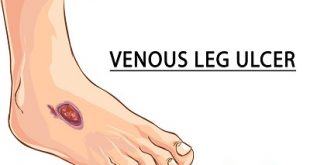Definition
Vitiligo is a skin disease in which white patches appear on different parts of the body. These white patches can develop anywhere, the pigment is found. It can turn hair white or some people can lose color inside the mouth or even effect eyes. When the pigment (color) producing cells get destroyed, white patches are produced in the skin.
Vitiligo is not life-threatening or contagious but life-altering. Some people with it tend to be socially isolated, some develop low self-esteem or even it amounts to a depression. Some people may have vitiligo for life but it is important to learn about it and develop coping strategies.
Vitiligo is more common before the age of forty, however, half the people, who have this disorder, develop it before age 20 yrs. It can affect both sexes and all races equally but it is more noticeable in people with dark skin. As many as 65 million and 0.5 to 1 percents of the population worldwide have Vitiligo.
Epidemiology
Worldwide, the prevalence of vitiligo ranges from 0.4 to 2.0 %, with regions of greater or lesser prevalence. Most studies demonstrate slightly greater prevalence in females and 50 % onset in childhood, but exceptions to these rules exist. Childhood vitiligo has been associated with atopic diathesis, halo nevi, and family history of vitiligo and autoimmunity.
Types of Vitiligo
Segmental vitiligo (SV) most often begins at an early age and affects only one area, on one side of the body, such as one side of the mouth, or neck. It generally spreads fairly quickly at the onset, then slows and remains stable after a year or so, with more than half also developing patches of white hair. SV is rarely associated with autoimmune disease.
Non-segmental vitiligo (NSV) is an autoimmune disease and typically begins on areas such as the hands, wrists, around the eyes or mouth, or on the feet, then spreads to areas such as the neck, chest, knees, and legs. NSV is considered to be progressive but has cycles of spreading and cycles of stability. NSV includes all types of vitiligo except segmental vitiligo.
Generalized: widespread and largely symmetrical distribution
Acrofacial or Acral: depigmented areas away from the center of the body such as the face, head, hands and feet
Focal: one or more areas of pigment loss in a confined area
Mucosal: mucous membranes are affected
Universalis: complete or nearly complete depigmentation
Mixed vitiligo (MV) begins as segmental vitiligo, and then later progresses into non-segmental vitiligo, becoming “mixed vitiligo.”
Risk factors of Vitiligo
- Age below 30 years
- FHx of vitiligo
- Autoimmune disease
- Chemical contact
Causes
The exact causes of vitiligo are unclear. A number of factors may contribute.
These include:
- An autoimmune disorder, in which the immune system becomes overactive and destroys the melanocytes
- A genetic oxidative stress imbalance
- A stressful event
- Harm to the skin due to a critical sunburn or cut
- Exposure to some chemicals
- A neural cause
- Heredity, as it may run in families
- A virus
Vitiligo is not contagious. One person cannot catch it from another.
It can appear at any age, but studies suggest that it is more likely to start around the age of 20 years.
Symptoms and Signs
White patches on the skin are the main sign of vitiligo. These patches are more common in areas where the skin is exposed to the sun. The patches may be on the hands, feet, arms, face, and lips. Other common areas for white patches are:
- The armpits and groin (where the leg meets the body)
- Around the mouth
- Eyes
- Nostrils
- Navel
- Genitals
- Rectal areas.
People with vitiligo often have hair that turns gray early. Those with dark skin may notice a loss of color inside their mouths.
Complications of Vitiligo
Potential complications include an increased risk of:
- Psychological or social issues
- Sunburn
- Skin cancer
- Iritis and other problems related to the eyes
- Hearing loss
- Treatment side effects such as itching
Diagnosis and test
The doctor will use a family and medical history, physical exam, and tests to diagnose vitiligo. The doctor may ask questions such as:
- Do you have family members with vitiligo?
- Do you or family members have any autoimmune diseases?
- Did you have rash, sunburn, or other skin problem before the white patches appeared?
- Did you have some type of stress or physical illness?
- Did your hair turn gray before age 35?
- Are you sensitive to the sun?
- The doctor will do a physical exam to rule out other medical problems.
Tests might include:
- Taking a small sample (biopsy) of the affected skin to be examined
- Blood tests
- An eye exam.
Treatment and medications
Since no cure is available for vitiligo, the main goal of treatment is to improve the appearance of discolored skin. The safest treatment option is cosmetics. Medication, light therapy, and surgery can cause dryness, itching, and burning of the skin or more serious side effects.
Cosmetics: Applying makeup or skin tanners to the affected areas can mask minor cases of vitiligo. Although cosmetics require a frequent application, they are generally safe and free of side effects.
Medication: Topical creams that affect the immune system or control inflammation (corticosteroid) may help re-pigment the skin. These creams may be used in combination with ultraviolet light to improve results. Due to adverse reactions, these treatments are generally used for small areas on the face and neck. Those with widespread vitiligo may wish to remove pigment from the remaining unaffected areas by applying topical creams that gradually lighten the skin.
Light therapy: Repeated courses of light therapy can help restore some color to the affected skin on the face, trunk, and limbs by triggering the skin’s natural healing process. In photochemotherapy, ultraviolet A (UVA) or ultraviolet B (UVB) light is used in combination with a drug that makes the skin more sensitive to UV light. Alternatively, narrow band UVB light can be used alone.
Surgery: Surgical options are available when cosmetics, medication, or light therapy do not yield desirable outcomes. Skin and blister grafting techniques involve removing the pigmented skin from unaffected areas and attaching it to small areas of discolored skin. These procedures may cause scarring and change the texture of the treated areas. The pigment can also be delivered to the discolored skin via tattooing. All surgical options pose the risk of triggering pigment loss in neighboring skin.
Prevention of Vitiligo
Most cases of vitiligo cannot be prevented. Reducing exposure to known triggers (e.g. sun, chemicals, and stress) can help prevent pigment loss in new areas of the body.
 Diseases Treatments Dictionary This is complete solution to read all diseases treatments Which covers Prevention, Causes, Symptoms, Medical Terms, Drugs, Prescription, Natural Remedies with cures and Treatments. Most of the common diseases were listed in names, split with categories.
Diseases Treatments Dictionary This is complete solution to read all diseases treatments Which covers Prevention, Causes, Symptoms, Medical Terms, Drugs, Prescription, Natural Remedies with cures and Treatments. Most of the common diseases were listed in names, split with categories.








excellent coverage of the topic without any ambiguity.the information is equally useful for professional& lay public.
what i do, to prevent myself from vitilligo
useful information, good work done
I like it.
good information, useful to all.
Well explained with all relevant details good coverage . Was Useful.
how can prevent i vitiligo
No methods prevent vitiligo, but using sunscreens with a minimum sun protection factor (SPF) of 15 to protect your skin from the sun is always a healthy decision.
thanks for the enlighment
I have my first born son had the symptoms from birth, what do I do
Please consult a doctor.
I have patches on lips colour has changed last from 3 yeRs my age is 24
Please consult a doctor.
Hi,
My name is shekar chettri.I am from Sikkim, INDIA.
I have that types of digesis,,,
How can I prevent this,,,,
Please consult a doctor to get rid of this problem.
white patches on leftside around eye and eyebrow also white in color since 5 year .
used many medicine but no effect.
Please consult a dermatologist asap.
What is the cream or drug for treating vitiligo?
0.1% Tacrolimus Ointment.
I have vitiligo since 2007,I stayed out of sun for a couple of years.In the summer i would swim at night,my dark tan faded away and i was one color.
Is tolenorm oil and ointment good for vitiligo
Tolenorm oil was proven to be effective in the management of Vitiligo problems.
Do have Treatment for Vitiligo
I need medicine for It
please consult a doctor to get medicines.
can a drugs for vitiligo be available in any pharmacy ? I have been using prednisolone tabs but yet no changes.pls list all what I can use to deem the patch on my part of my body.thanks
Choose some natural treatments.
pls list drugs and ointment to reduce the white patches because I am a vitiligo victim.
Tacrolimus Ointment
Hi there
What is the treatment or cream I can perhaps use and or will it help only asking, what can we do to prevent other parts of body to spread.
Many Thanks
Charm
Pimecrolimus cream
What are some of the natural treatments?,,because I’ve tried all medicines and I have also consulted a dermatologist but it’s not helping,I think may be the natural treatment may work,,
Despite this lack of evidence, some people claim to have success with a variety of at-home treatments. Popular topical home remedies include:
A mixture of lemon and sweet basil extract
Ginkgo biloba paste
A mixture of turmeric and mustard oil
how do we call topical cream